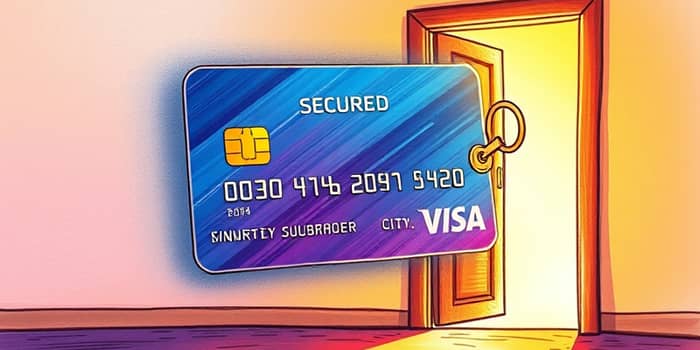
In a world where a healthy credit history unlocks financial freedom, secured credit cards stand out as a powerful tool for those starting from scratch or recovering from setbacks. By offering a path to demonstrate responsible habits, these cards become more than just a payment method—they become a launching pad toward building a stronger financial future.
Whether you have faced past credit challenges or simply lack a credit record, understanding how secured cards work and applying smart strategies can transform your financial profile over time.
A secured credit card is essentially a regular credit card backed by a deposit, which serves as collateral for the issuer.
One of the greatest advantages of secured cards is their role in establishing a track record with the major bureaus. Most issuers report monthly payment activity to Equifax, Experian, and TransUnion, ensuring your responsible behavior is recorded.
To maximize impact, focus on two key factors:
Over time, on-time payments and low balances can lead to a steady improvement in your credit score. Within six to twelve months of diligent use, many cardholders find they qualify for unsecured cards with higher limits and better rates—commonly referred to as “graduating” from a secured card.
Secured credit cards offer features similar to traditional cards alongside some unique considerations. Below is a concise summary of potential drawbacks to weigh before applying:
Secured cards can be a springboard toward better credit when used deliberately. Adopt these practices to ensure you’re making the most of your card:
By following these steps, you demonstrate financial responsibility and position yourself for better offers down the line.
While secured cards are invaluable for many, they aren’t a one-size-fits-all solution. If you already qualify for standard credit products, you might find better rates and rewards without a deposit. Likewise, if saving for the required security deposit strains your budget, alternative credit-building tools—such as becoming an authorized user on a family member’s account—may be more feasible.
Secured credit cards represent a clear, structured method to establish or restore your creditworthiness. With on-time payments and low balances consistently recorded, these cards pave the way to higher limits, lower rates, and the freedom that comes with a healthy credit profile.
Embrace the journey of rebuilding or building credit as an opportunity for growth. Every responsible purchase and every timely payment bring you one step closer to achieving long-term financial stability and opening doors to a brighter future.
References













